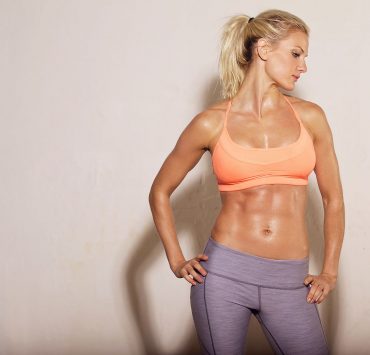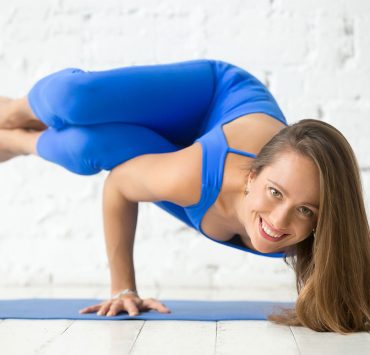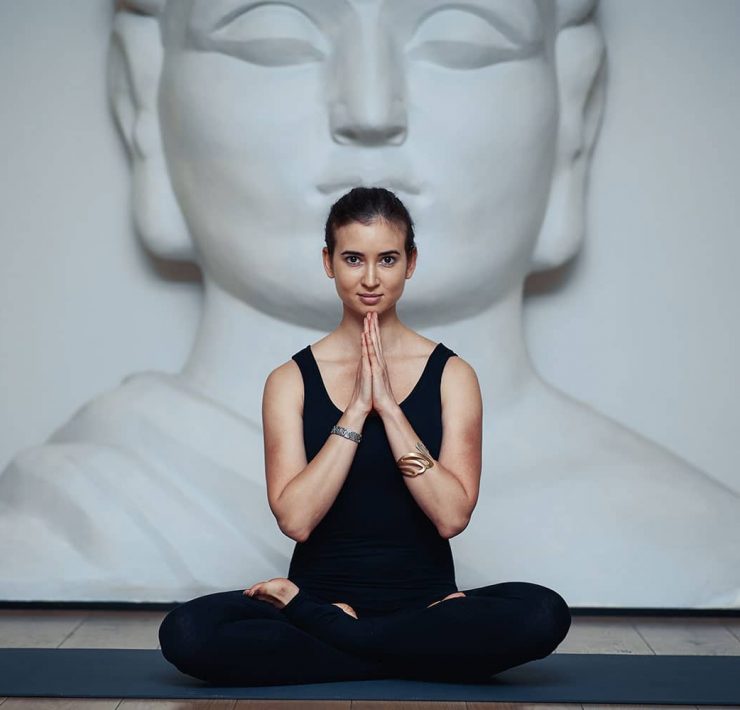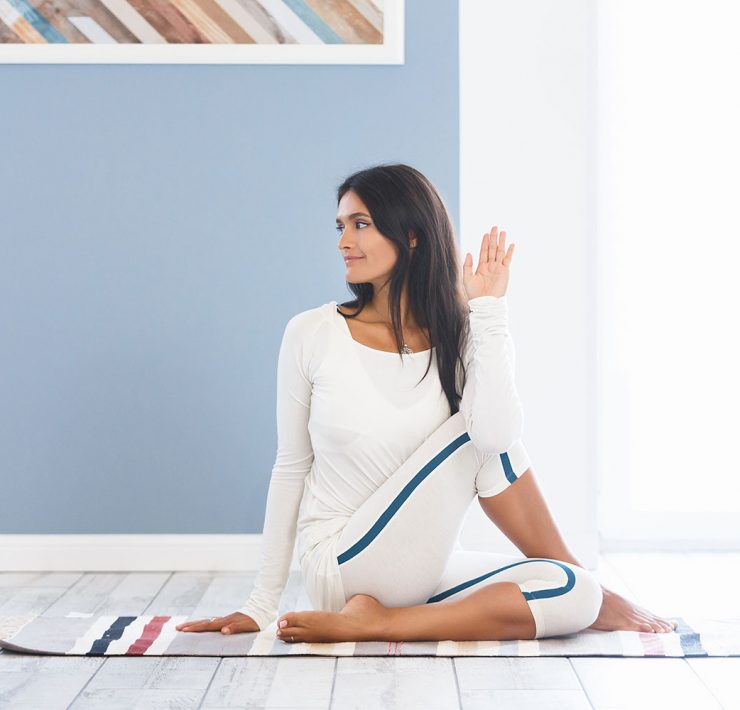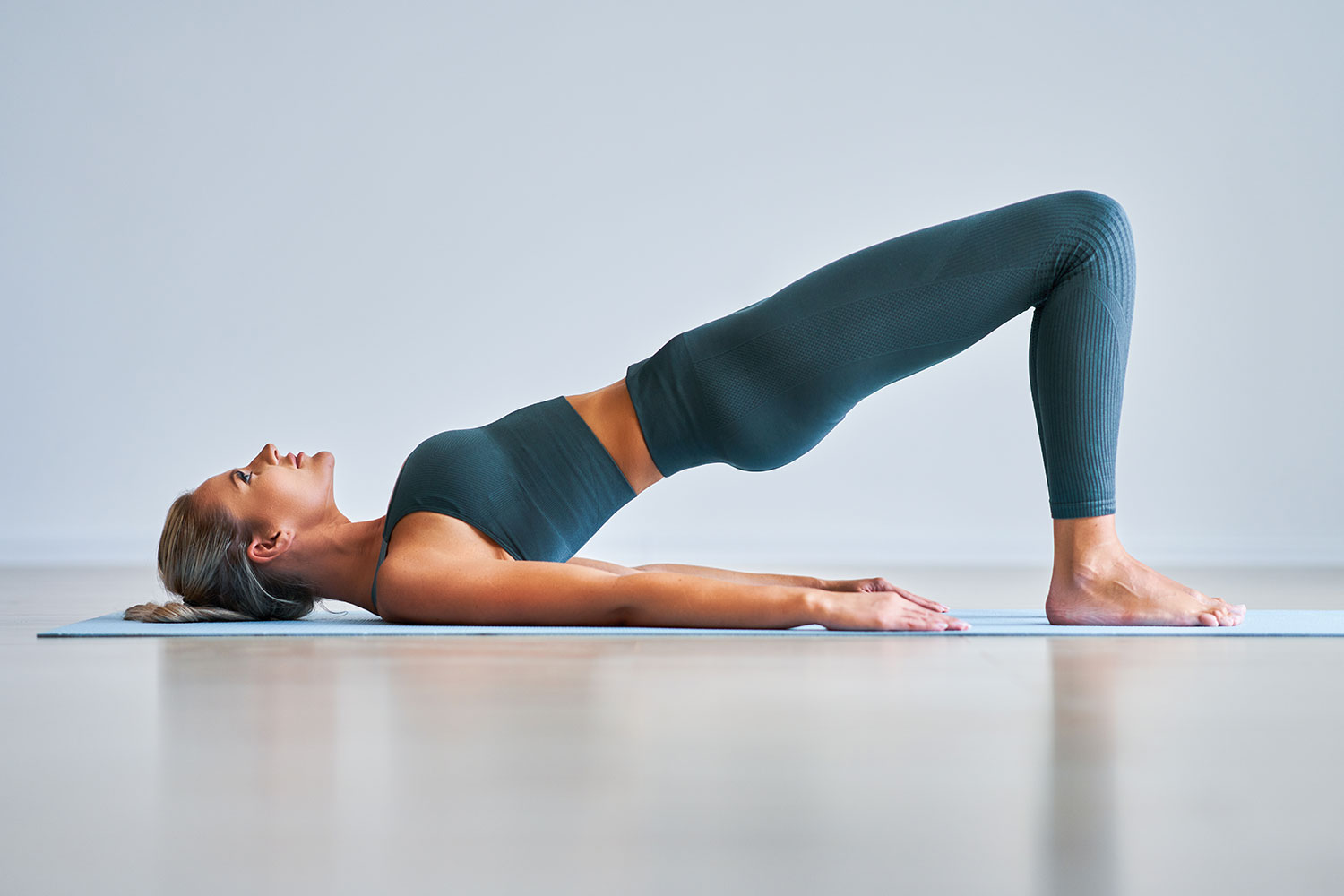
Having been a teacher’s assistant at over 50 yoga teacher…
The back is one of the most common places on the body to experience chronic pain. Back pain can range from niggling and annoying to severely debilitating. Due to the complexity of the structures of the back, there are many ways back pain can occur. That is why it is valuable to take steps to maintain back health. A major way you can do this is by not only regularly practicing yoga, but building your yoga practice around poses that support back health.
Anatomy Of The Back

As mentioned, the back is very complicated and as such, both maintaining back health and preventing back dysfunction can be complicated as well. Therefore, it is important to gain an understanding of the structures that make up the back before determining which yoga poses are best fit to supporting back health.
The back is composed of the skeletal system, as well as soft tissues such as muscles, discs, and ligaments.
Yoga teaches you how to listen to your body. Mariel Hemingway
Within the skeletal system, the spine is composed of 33 bones, or vertebrae. This includes seven cervical vertebrae (neck region), 12 thoracic vertebrae (mid back region), five lumbar vertebrae (low back region), five sacral vertebrae (fused together and often referred to as the tailbone), and four coccygeal vertebrae (known as the coccyx, located at the bottom of the tailbone). The vertebrae give the back a natural S curve. They each come in slightly different sizes and shapes, with the lumbar vertebrae being largest as they support the weight of the back, and the cervical vertebrae being the most delicate. Each vertebra is separated by an intervertebral disc, which provides cushioning and movement for the skeletal system.
Anatomically, the back also consists of various muscles. These muscles consist of superficial muscles such as the trapezius, levator scapulae, rhomboids, and latissimus dorsi. There are also intermediate muscles such as the serratus posterior, serratus superior, and serratus inferior, and intrinsic muscle such as the spinalis, longissimus, and illiocostalis. Each of these muscles affects the back in unique ways. However, it is useful to think of them as two categories: flexors and extensors. Flexor muscles bend the body forward, and extensor muscles help with lift, standing, and arch.
Importance Of Back Health

To understand the importance of back health, consider these statistics:
- Back pain is the worldwide leading cause of disability
- Years lived with back pain related disability has increased 54% in the last 35 years
- 80% of adults experience back pain sometime during their life
- 30 million Americans currently live with back pain
Clearly, back pain can be debilitating. Its radiating pain affects not only daily life and personal relationships, but it also leads to long term disability and missed work days. Therefore, it is essential to take steps to both prevent and reduce back pain. There are many lifestyle changes that can be undertaken, such as avoiding inactivity, wearing high quality shoes with arch support, having proper posture, keeping a healthy diet, using ergonomic chairs and lifting positions, and engaging in regular exercise, such as yoga.
8 Best Yoga Poses For Your Back
When considering back health, there are four main areas to consider: flexibility, strength, stability, and mobility. Each factor is essential for back health. The following eight yoga poses can help improve back health, each by focusing on flexibility, strength, stability and/or mobility.
Adho Mukha Svanasana — Downward Facing Dog Pose

Downward facing dog pose is a classic yoga pose included in most practices. In terms of back health, it supports the back by helping strengthen the muscles such as the trapezius.
To perform downward facing dog, start kneeling on all fours with the hands planted beneath the shoulders, and the toes tucked. Inhale and lift the hips whilst straightening the legs. Press back into downward facing dog. In the pose, let your heels reach toward the mat, feeling a stretch through your hamstrings. Ground firmly through the palms of your hands and engage your inner upper arms toward your outer upper arms. Let your head and neck relax, so your ears hang level with your upper arms.
Salabasana — Locust Pose

Locust pose, or salabasana, is another pose that strengthens the back. It is actually an essential pose for back strengthening because it requires engaging the muscles along the entirety of the back. This is especially helpful to help reverse the tight chest and rounded shoulders so common in poor posture due to looking at a computer or mobile device all day.
To practice locust pose, start by lying face down on your mat with your toes untucked. Let your arms reach out in front of you on the mat, with palms facing each other. On an inhale, engage the back muscles and lift both ends of the body evenly. The stronger the back muscles are, the higher you will be able to lift the arms and legs off the mat. Try to avoid tightening the buttocks here. Instead, let the lifting motion come from the back muscles. Hold here for a few breaths before exhaling and relaxing back to the mat. Repeat this cycle at least three times.
Ardha Chandrasana — Half Moon Pose

Half moon pose, or ardha chandrasana, is a useful pose for core strength, which includes muscles that originate in the back. This is a balancing pose that requires extending the torso straight forwards without support. To maintain this position intrinsic muscles must be used. Overall, this is a powerful pose to promote stability within the back.
To practice half moon pose, transition from warrior III. From warrior III, shift weight onto your standing right leg and open your body to the left side of the room. Stack your left hip on top of your right hip, whilst opening the arms up to a “T” with the left arm reaching toward the ceiling, and the right arm reaching toward the mat. Your right hand can either hover above the mat, or you can use a block for support. In full posture, the body is all on one flat plane, as if sandwiched between two panes of glass.
Uttkatasana — Chair Pose

Chair pose, like downward facing dog pose, is another classic yoga pose that is frequently taught. Regularly practicing chair pose, particularly full posture with the arms extended overhead, will help build back muscle strength.
Begin your journey to chair pose, or utkatasana, standing on your mat with the feet and knees together. Inhale and reach your arms straight up, keeping your palms facing one another. Exhale and bend into your knees. You should still be able to see your toes if you look down. Do not let the knees extend beyond the toes in this pose. Sit the bottom back into the pose, as if sitting in a chair. Keep a straight back whilst letting go of any tension in the trapezius and around the neck and shoulders. If you become fatigued in this pose, you can always bring your hands down to Namaste at heart center. Try holding chair pose for an extended period of time, or minimum of five breaths, in order to feel heat building in the body.
Marichyasana III — Marichi’s Pose

Marichi’s pose is the third pose in the marichyasana series. It offers a deep twist. It is a wonderful pose for the back as it creates space and mobility, particularly in the low and mid back. This can help with misalignments, whether skeletal or muscular.
Start sitting upright on your mat with your legs extended in dandasana, or staff pose. From here, bend your right knee and plant your right foot on the mat alongside your left inner thigh. Place your right hand on the mat behind you, about a foot or so behind your bottom. Inhale and lift your left arm toward the ceiling. Exhale and twist to the right, bending the left elbow and planting it on the outside of the bent right knee. Twist your gaze over your right shoulder, toward the back of the room. Hold this twisting posture for three to five breaths, consciously trying to relax the core and back muscles to enable a deeper twist with each breath.
Malasana — Garland Pose

Garland pose, also called malasana, is often referred to as the yogi squat. At first it may not be clear how this pose benefits the back. However, due to its deep squat, it is a useful pose for stretching the pelvic floor muscles and realigning the muscles and vertebrae in the sacrum, coccyx, and lumbar spine. It helps with mobility and increases ease of movement in the base of the spine.
To perform garland pose, start by standing on your mat with your feet planted a little wider than shoulder’s width apart. Angle the feet outward in a 45 degree angle, toward the front corners of the mat. Bring your palms together in heart center for Namaste. Inhale and open the heart, and exhale and bending the knees, squat deeply into garland pose. In full posture the heels should remain planted on the floor. The bottom is reaching toward the mat and the spine extends straight. The elbows should be planted securely on the insides of the knees. Press the knees into the elbows and the elbows into the knees here to help maintain balance. Keep the heart open and forward and try not to round the spine at all here. Hold for five breaths minimum.
Setu Bandha Sarvangasana — Bridge Pose

Bridge pose, also called setu bandha sarvangasana, is one of the best yoga poses for people with low back pain, particularly from slipped or bulging intervertebral discs. It is a very gentle pose, yet still offers a combination of strengthening and flexibility. Through its back bend it helps realign the spine.
To practice bridge pose, lie flat on your back on your yoga mat. Bend your knees and plant your feet, hips width apart, about a foot in front of your bottom. Slowly begin to lift your bottom off the mat. As your bottom and low back fit from the mat, roll your shoulder blades under you and find a clasp with your hands. Inhale and lift your hips fully into the pose. As you maintain bridge pose, breathe deeply into your low belly. Keep your gaze straight ahead and avoid turning your head side to side so as not to injure your neck. Keep your gluteal muscles relaxed in order to maintain the muscle engagement in your back.
Salamba Bhujangasana — Sphinx Pose

Sphinx pose is one of the gentlest backbends and requires little strength, but has great rewards. It promotes both flexibility and mobility within the back muscles and vertebrae. Because it is such a gentle posture, it may be especially valuable to individuals with prior injury or history of back spasms.
To practice sphinx pose, or salamba bhujangasana, start by lying face down on your mat. Keep your toes untucked and the tops of your feet pressing into the mat. Enter the pose by planting your forearms onto the mat. The elbows should be aligned beneath the shoulders. The palms press flat into the mat. Inhale and open the chest between the upper arms. Reach the heart forward and lift the head and gaze skyward. Maintain a relaxed back, belly, buttocks, and legs. Hold this heart opener for five breaths, and feel how it subtly opens the chest muscles, enabling a deeper backbend with each breath.
Conclusion
Yoga as a holistic practice is beneficial for back health: From bodyweight asanas to mindfulness philosophies, regular yoga practice can effectively promote back strength and improve pain tolerance. However, the previous eight yoga poses are especially helpful for supporting back health – whether that be through strengthening, flexibility, stability, or mobility. Certain people may want to focus more on each issue, depending on their unique back health and history. If you have back injuries such as slipped discs, please consult with a medical professional before attempting a yoga practice for back health. Some poses may be contraindicated based on your personal history.
What's Your Reaction?
Having been a teacher’s assistant at over 50 yoga teacher trainings worldwide, Rebecca Rebecca has a firm grasp on the fine art of yoga and meditation. In her work, she carefully reflects on a vast expanse of knowledge to help others find peace in both body and mind.






